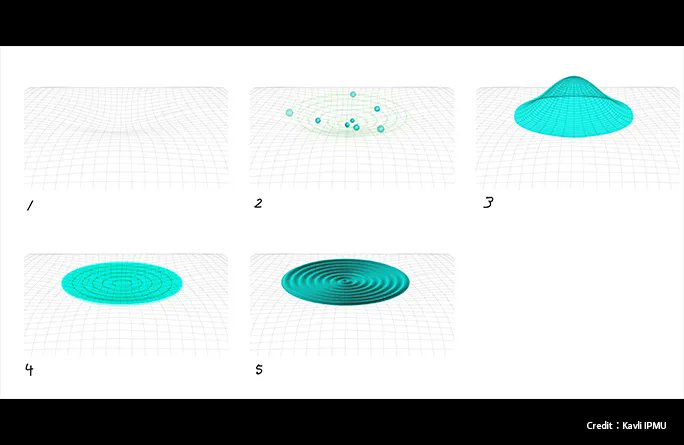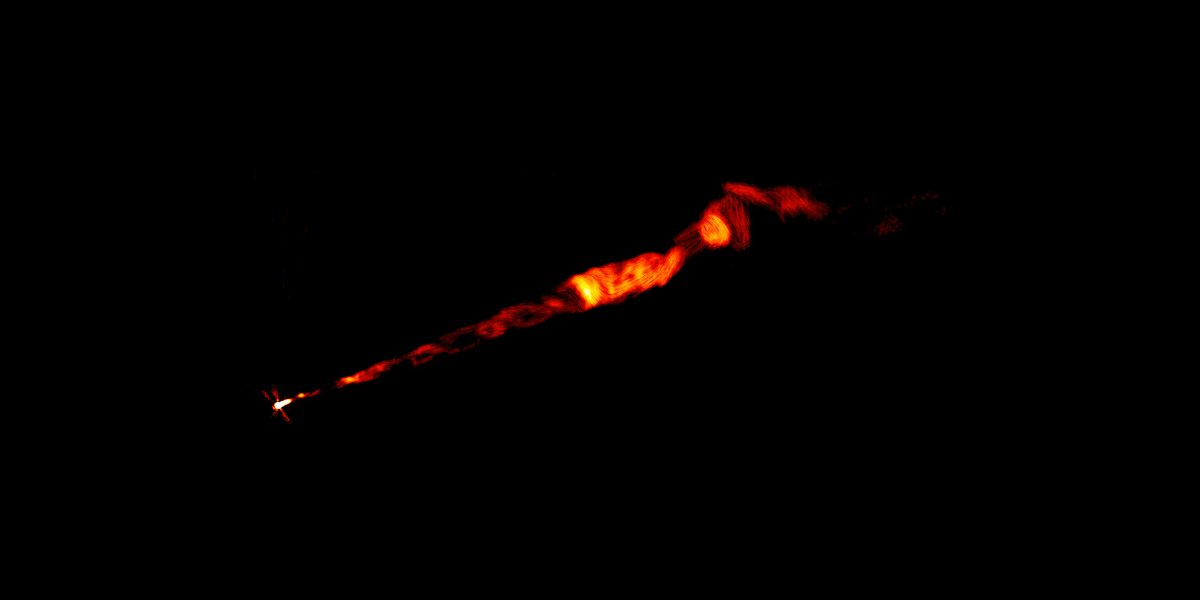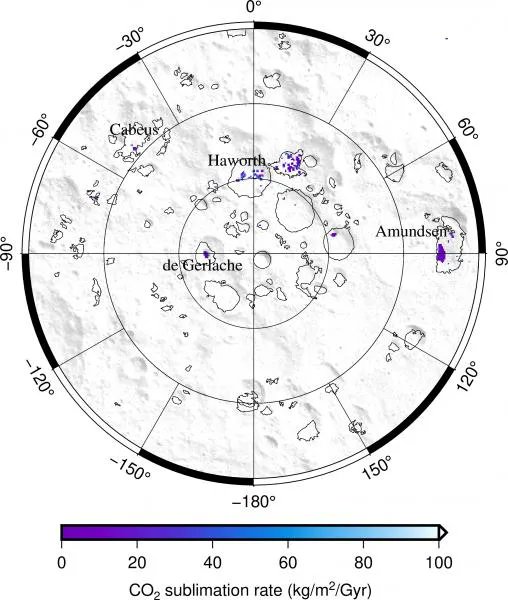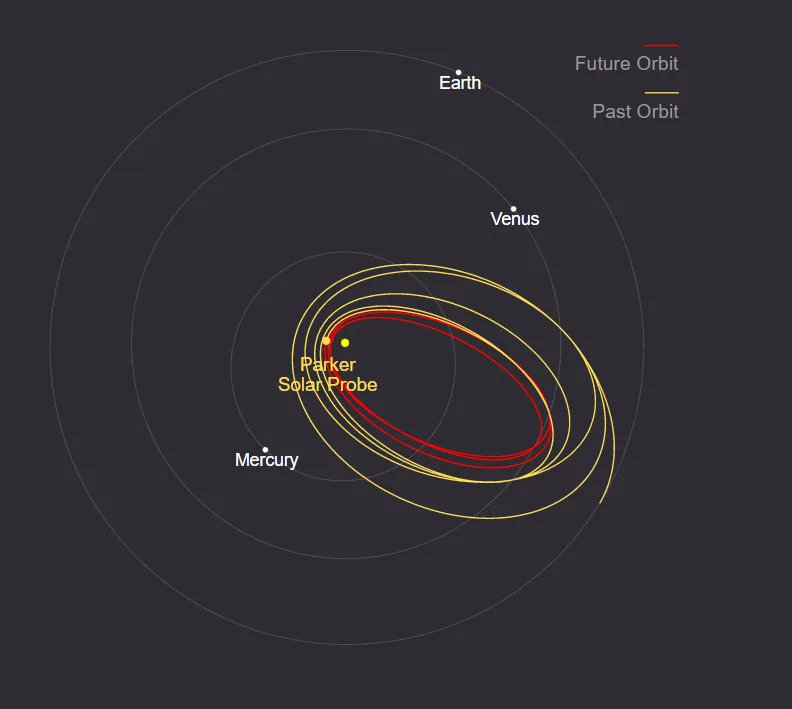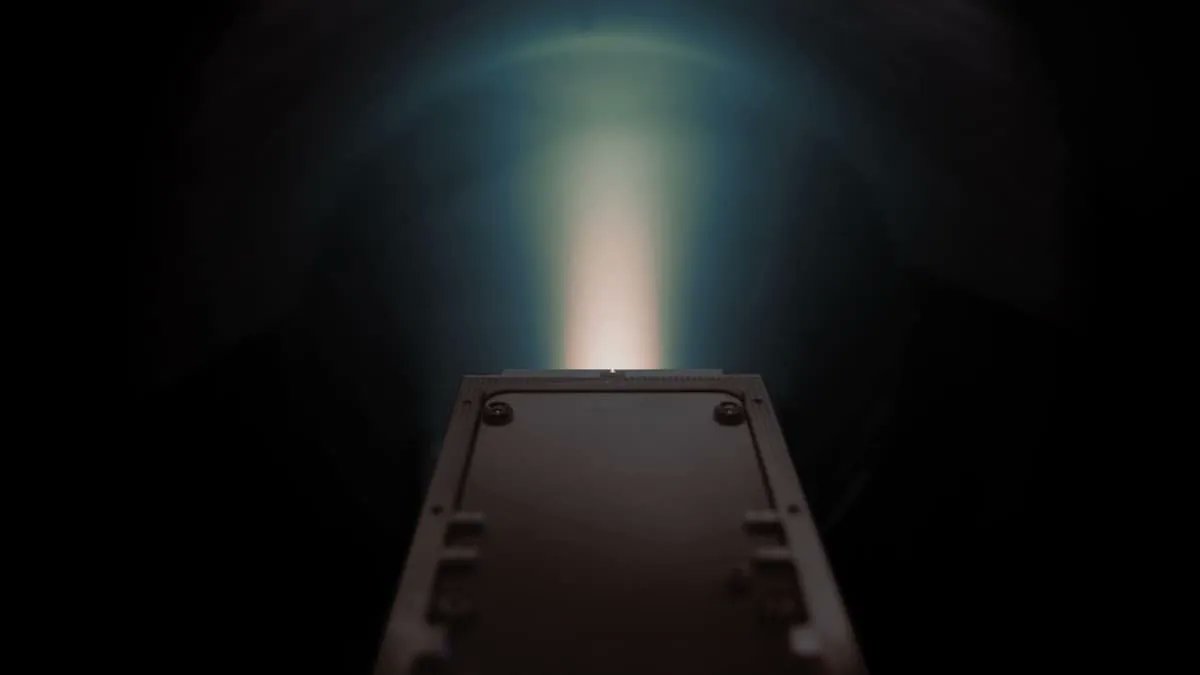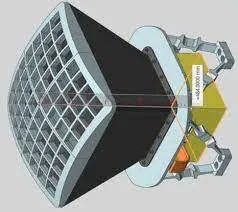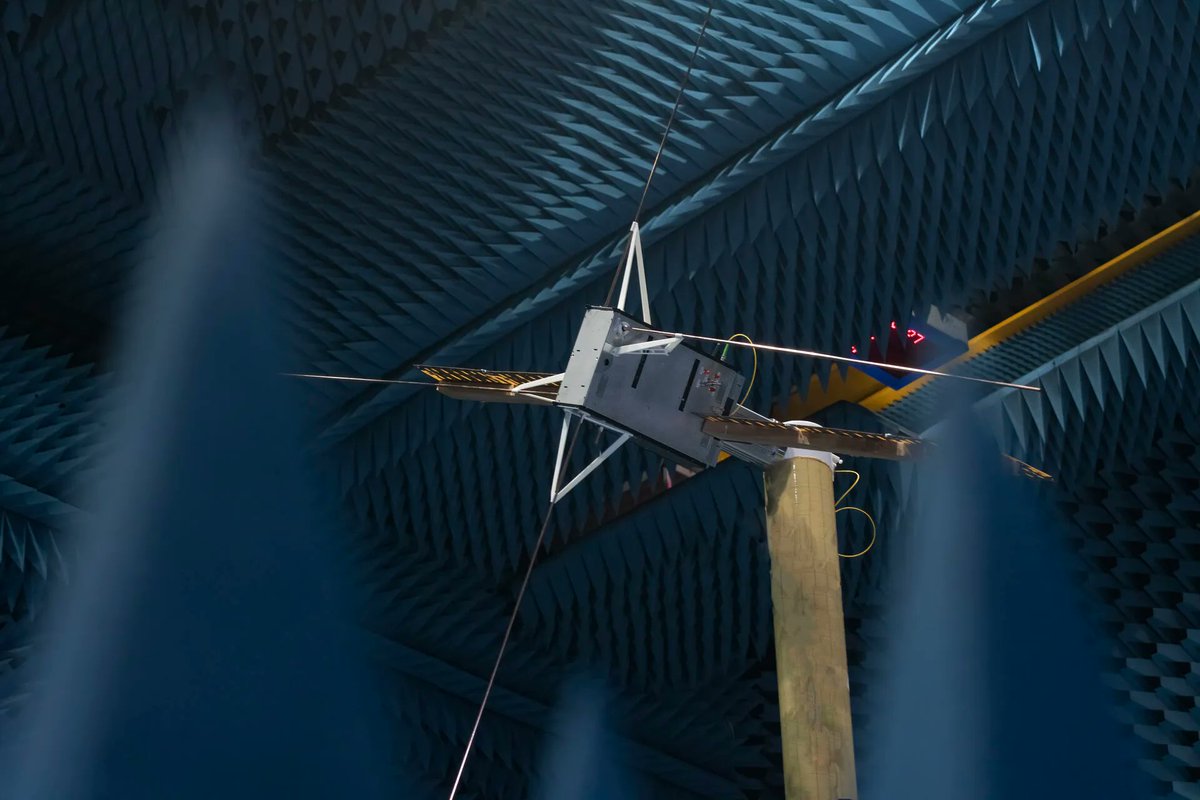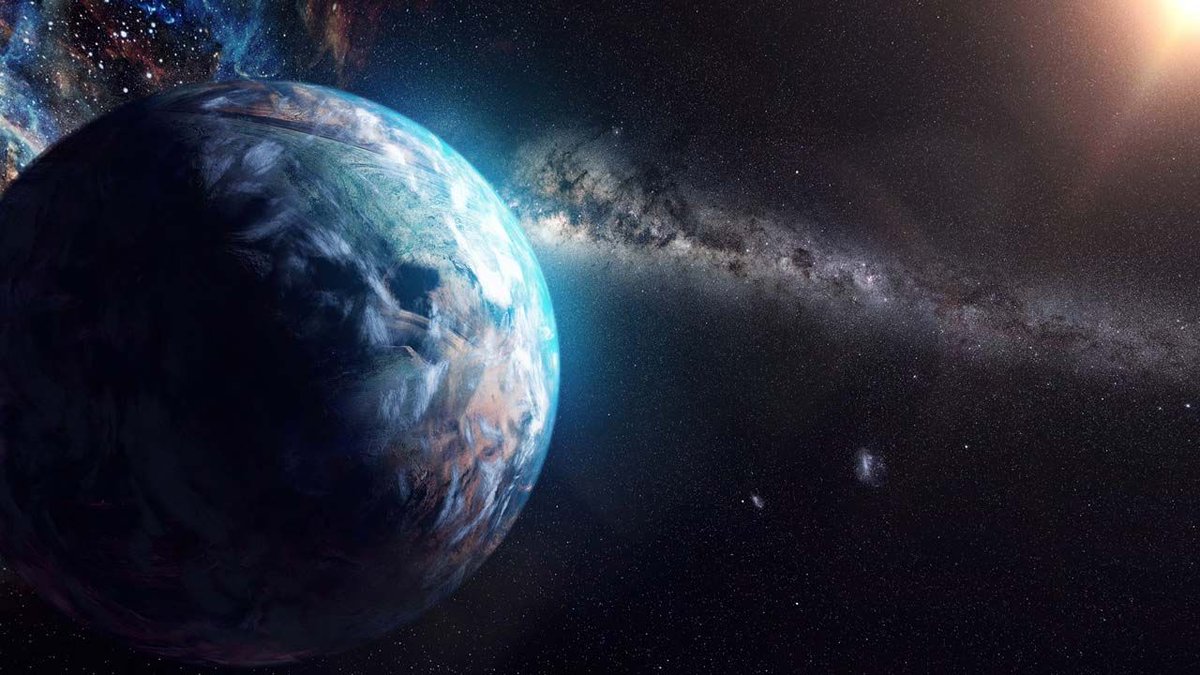One of the questions underpinning both philosophy and science is “why are we here”? Ask an astrophysicist, and they might answer with an imbalance between matter and antimatter at the beginning of the universe. While that is a (relatively) simple explanation, it then begs the question – why was there an imbalance in the first place? Scientists have been seeking ways to test various theories regarding that imbalance but have come up empty-handed so far. Now, a team of theoretical physicists think they might have found a way to test some of those theories using gravitational waves.
Continue reading “Gravitational Waves Could Explain why There’s More Matter Than Antimatter in the Universe”A Spacecraft Orbiting the Moon Just Captured an Image of Saturn
Cameras can be finicky – especially ones primarily used for astronomy. When used for a purpose other than their intended one, sometimes they result in horribly muddled or blurry images. However, sometimes an image works out just right and provides a whole new perspective on a familiar scene. That’s what happened recently when the Lunar Reconnaissance Orbiter (LRO) turned one of its cameras toward one of astronomy’s favorite places – Saturn.
Continue reading “A Spacecraft Orbiting the Moon Just Captured an Image of Saturn”M87’s Supermassive Black Hole is Spewing out a Spiraling jet of Material
Patterns in nature often occur in more than one place. Spirals, symmetry, and chaos all impact natural phenomena, from the shape of a shell to the course of a river. So it shouldn’t come as a surprise that one of the most famous and fundamental shapes from biology also appears in astrophysics. Yes, scientists have found a double-helix structure in the magnetic field of M87. And it looks just like a super enlarged DNA strand.
Continue reading “M87’s Supermassive Black Hole is Spewing out a Spiraling jet of Material”Not Just Water, There Could be Frozen Carbon Dioxide on the Moon too
Despite all its wonderful properties, water isn’t the only resource needed for space exploration. Carbon is another important ingredient for many necessary materials, such as steel, rocket fuel, and biomaterials. Therefore, proponents of lunar exploration should be excited by a recent study led by Dr. Norbert Schorghofer of the Planetary Science Institute that found natural “cold traps” for carbon dioxide in some of the permanently shadowed craters of the moon.
Continue reading “Not Just Water, There Could be Frozen Carbon Dioxide on the Moon too”Parker Solar Probe Hurtles Past the Sun, Making its Closest Approach so far
We’ve covered plenty of the Parker Solar Probe’s exploits here at UT, but it keeps breaking new records almost every month. Now, with its newest flyby, it has gotten closer to the Sun than ever before, breaking its own record from previous flybys.
Continue reading “Parker Solar Probe Hurtles Past the Sun, Making its Closest Approach so far”Company Tests Iodine Thruster in Space for the First Time
Ion thrusters have played second fiddle to chemical rockets for most of the history of space exploration. Part of that is because of their inability to launch payloads into orbit. But in space, their high thrust-to-weight ratio has plenty of appeal. Other features have held the technology back, including the difficulty of working with the thruster’s fuel source – xenon. Now, a team of engineers and scientists from ThrustMe, a French start-up that focuses on developing advanced propulsions systems, have developed an ion thruster that works on an entirely new and much easier to use material – iodine.
Continue reading “Company Tests Iodine Thruster in Space for the First Time”The Gamow Explorer Would be a new Gamma-ray Observatory to Search for the First Stars in the Universe… as They Explode
Gamma rays are useful for more than just turning unassuming scientists into green-skinned behemoths. They can also shine a light on the deaths of some of the earliest stars in the universe. More accurately, they are some of the light caused by the deaths of the earliest stars in the universe. Now, a team of scientists led by Nicholas White of George Washington University, and formerly of NASA’s Goddard Space Flight Center, has proposed an observatory mission that would scan the sky for evidence of Gamma-ray bursts (GRBs) and use them to understand the early universe.
Continue reading “The Gamow Explorer Would be a new Gamma-ray Observatory to Search for the First Stars in the Universe… as They Explode”An Upcoming Asteroid Mission Will be Able to Peer 100 Meters Under the Surface
Engineers only get one shot at making a spacecraft work as intended. Or at least they only get one shot in space. In the preparation leading up to that final, climactic moment, there are typically thousands of hours of tests run on numerous systems and subsystems. If all goes well, it bodes well for the mission’s overall success, but if problems arise, it’s much easier to address them on the ground than while a spacecraft is already orbiting. A model of a new spacecraft known as Juventas just completed a significant testing milestone – passing testing in a room known as an anechoic chamber.
Continue reading “An Upcoming Asteroid Mission Will be Able to Peer 100 Meters Under the Surface”The Parker Solar Probe is getting pelted by hypervelocity dust. Could they damage spacecraft?
There’s a pretty significant disadvantage to going really fast – if you get hit with anything, even if it is small, it can hurt. So when the fastest artificial object ever – the Parker Solar Probe – gets hit by grains of dust that are a fraction the size of a human hair, they still do damage. The question is how much damage, and could we potentially learn anything from how exactly that damage happens? According to new research from scientists at the University of Colorado at Boulder (UCB), the answer to the second question is yes, in fact, we can.
Continue reading “The Parker Solar Probe is getting pelted by hypervelocity dust. Could they damage spacecraft?”The Decadal Survey is out! What new Missions and Telescopes are in the Works?
It’s that time again. Once every ten years, the American astronomy community joins forces through the auspices of the National Academies to produce one of the most important and influential reports in their discipline – the decadal survey. This report has been the impetus for some of the great observational instruments of our time, including Spitzer, the Large Millimeter Array, and Chandra. Upcoming heavy-hitting observatories, such as Nancy Grace Roman and Vera C. Rubin, also spawned from suggestions made in the Decadal Survey. In short, if you want to get a grandiose space telescope funded, your best bet is to have it supported by the National Academies in the form of the Decadal Survey. Now a new one is out – so what does it back for the upcoming decade and beyond?
Continue reading “The Decadal Survey is out! What new Missions and Telescopes are in the Works?”
